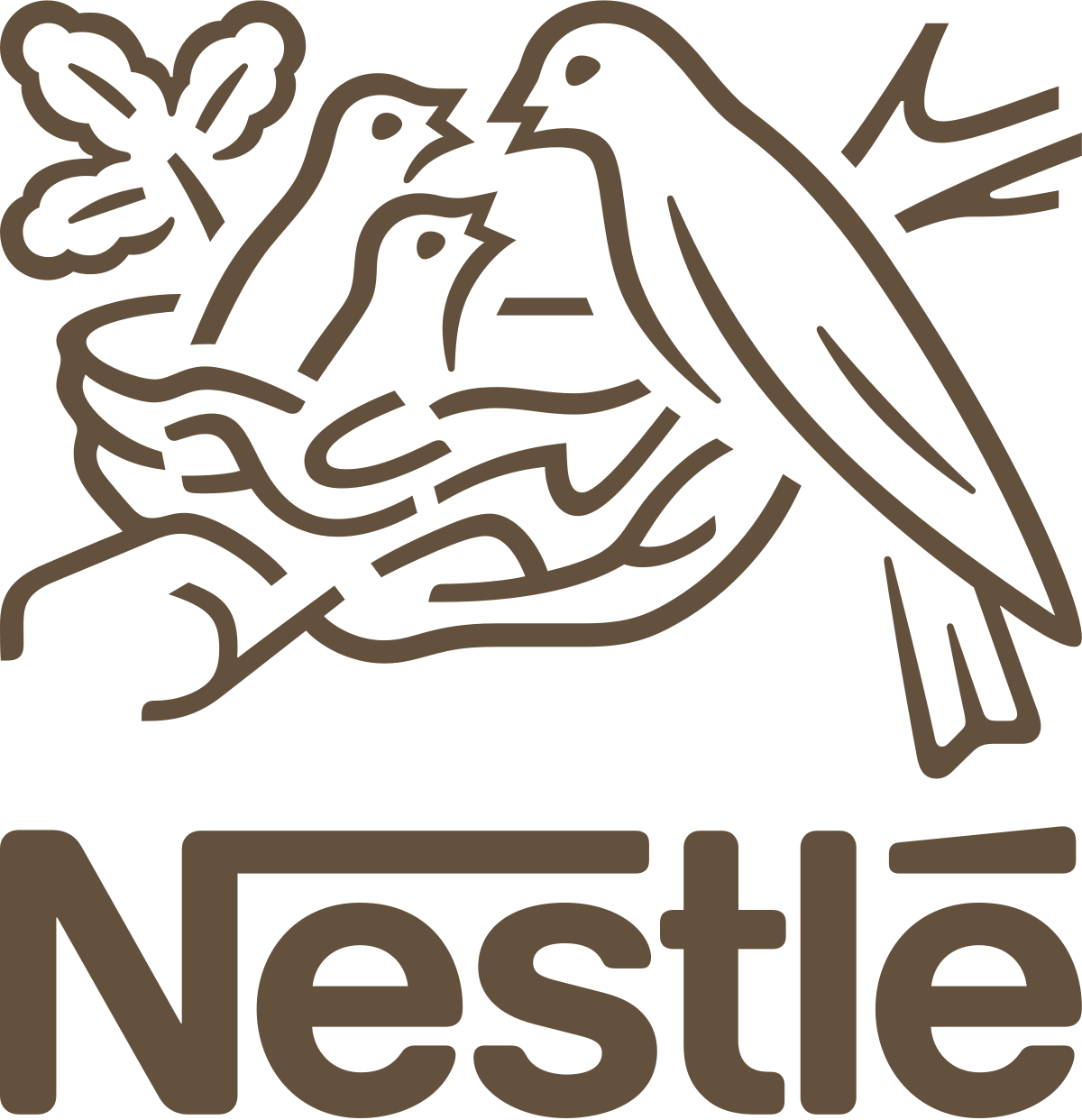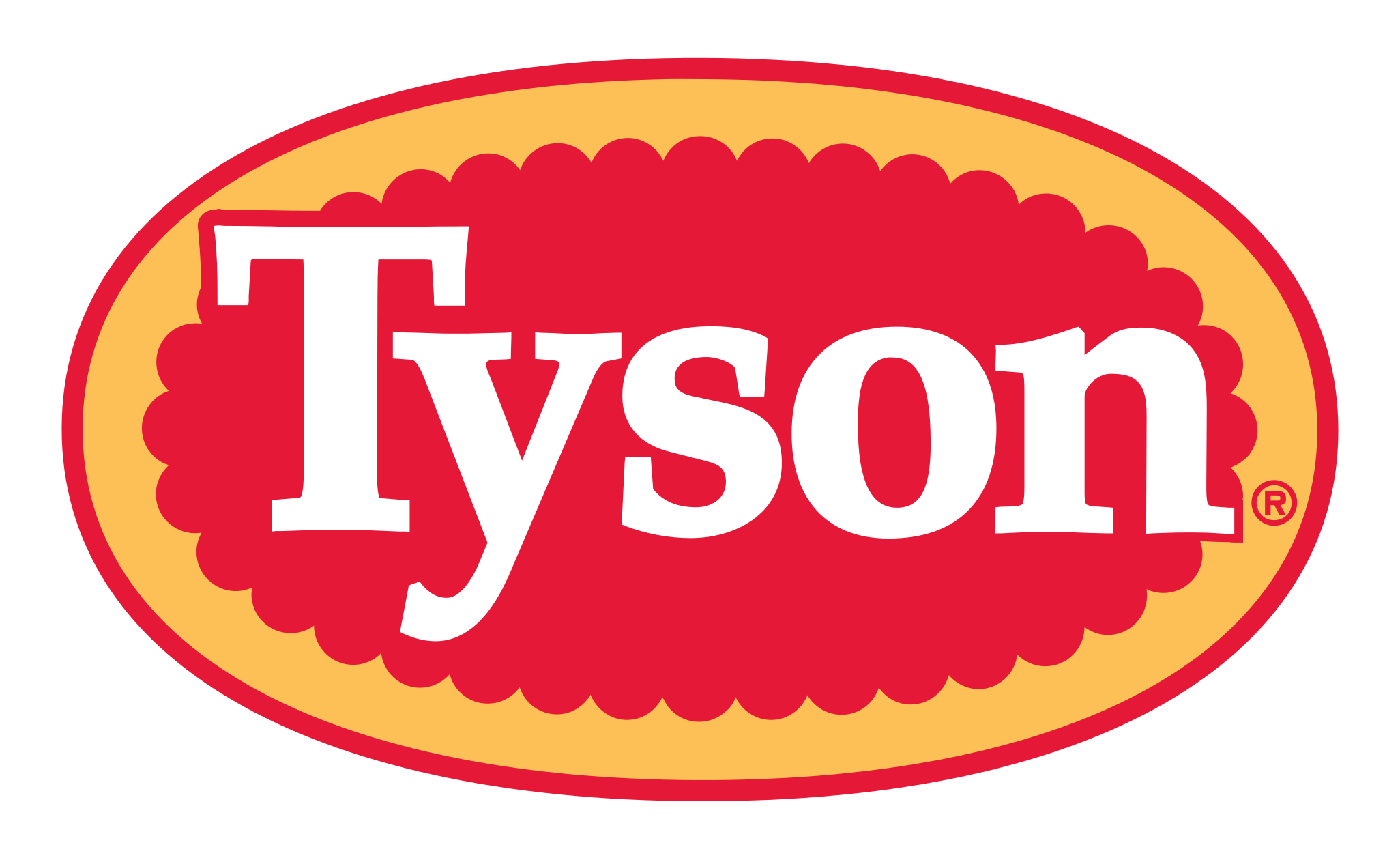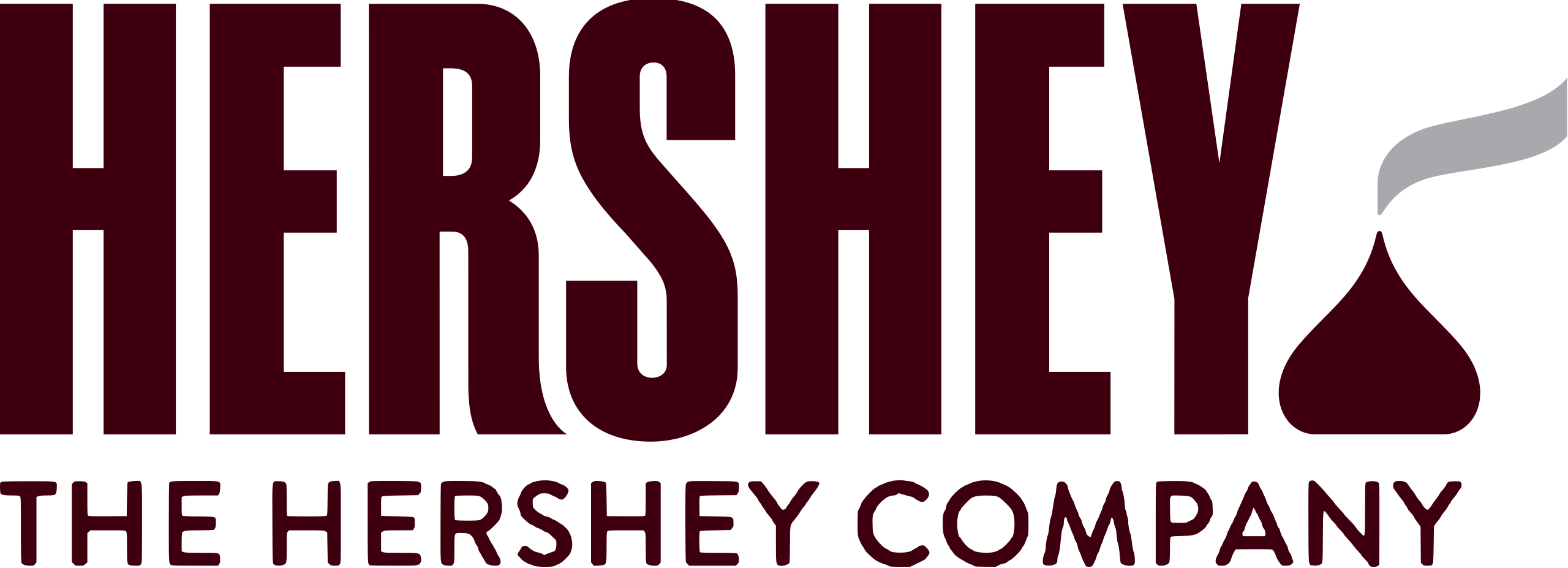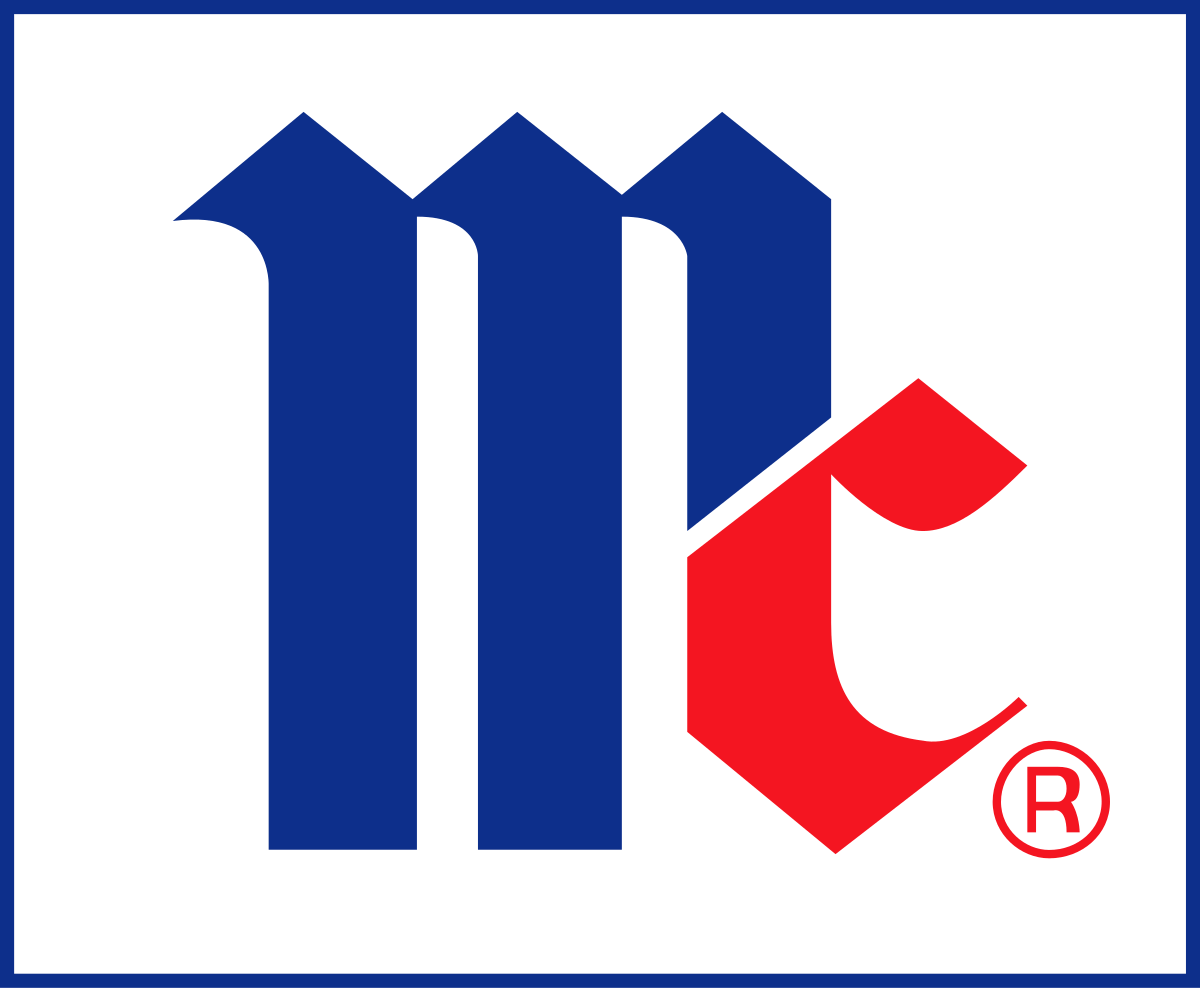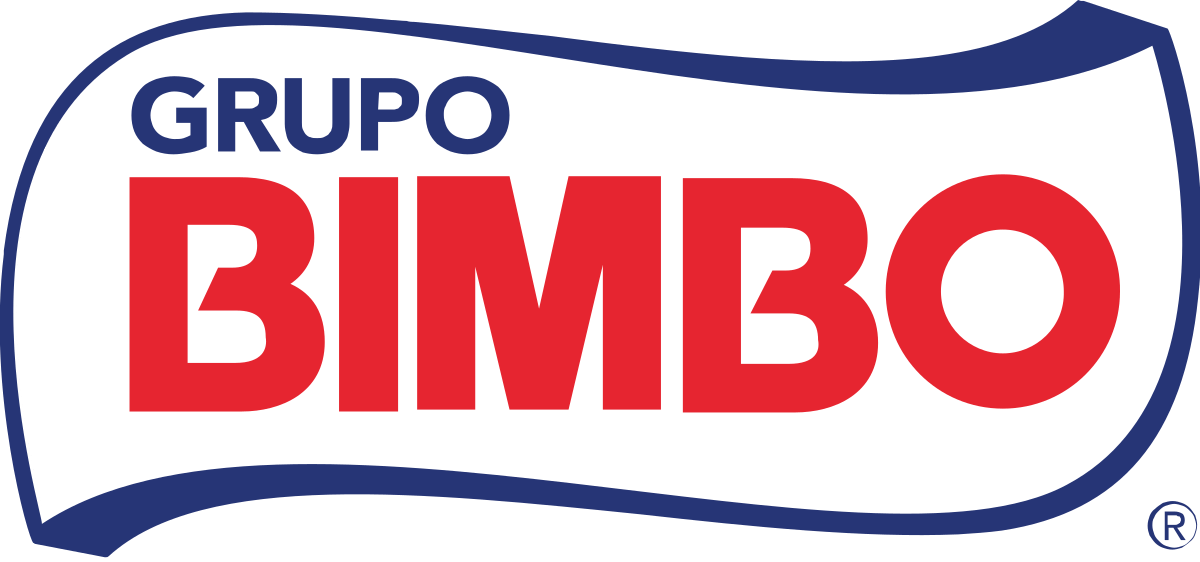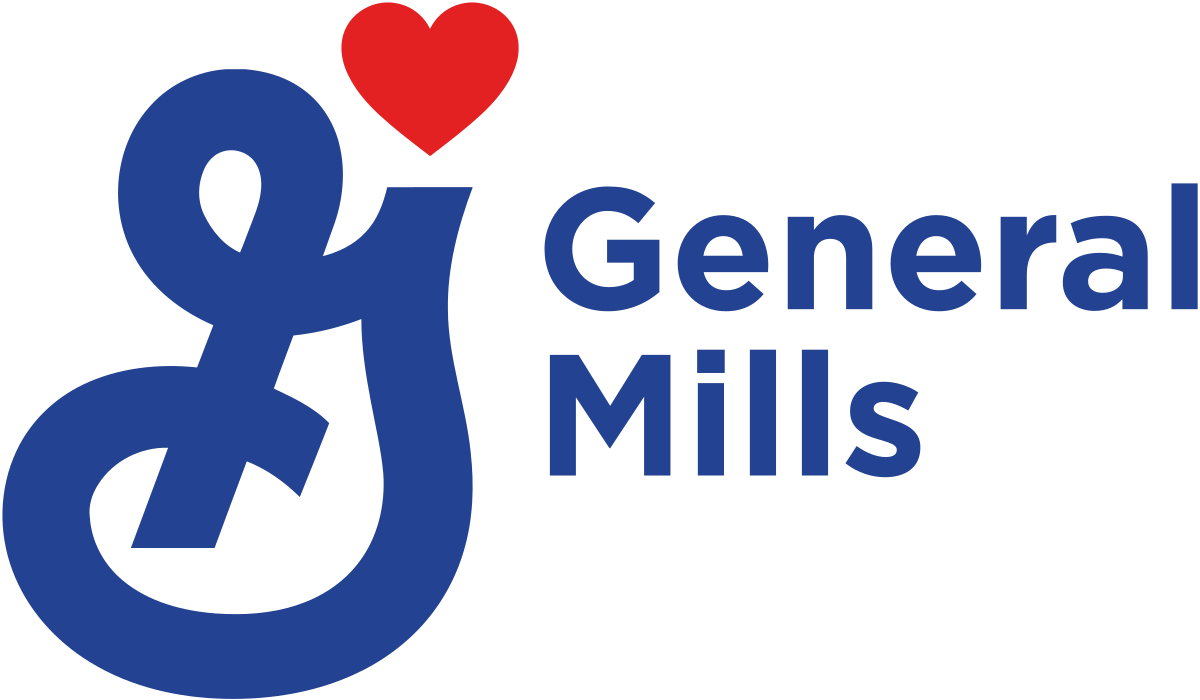Global Clean Label Ingredients Market, By Type, by Form, By Application, By Region & Segmental Insights Trends and Forecast, 2024 – 2034
- Industry: Food & Beverages
- Report ID: TNR-110-1292
- Number of Pages: 420
- Table/Charts : Yes
- September, 2024
- Base Year : 2024
- No. of Companies : 10+
- No. of Countries : 29
- Views : 10070
- Covid Impact Covered: Yes
- War Impact Covered: Yes
- Formats : PDF, Excel, PPT
Clean label ingredients refer to natural, minimally processed ingredients that consumers recognize and trust. These ingredients are free from artificial additives, preservatives, and chemicals, aligning with the growing consumer demand for transparency and healthier food options.
The clean label ingredient market has experienced substantial growth as consumers increasingly seek foods and beverages made with recognizable, natural ingredients. These ingredients are vital in various applications, including beverages, bakery products, dairy, and processed foods. Consumers use clean label products daily, from enjoying a morning smoothie made with natural flavors and sweeteners to choosing snacks free from synthetic additives. The importance of clean label ingredients lies in their contribution to overall well-being, offering a healthier alternative to conventional processed foods and aligning with the global trend toward health-conscious eating.
“The Global Clean Label Ingredients Market Generated Revenue of US$ 129.3 Billion in 2023 and US$ 225.9 Billion in 2034 and is Expected to Grow at a CAGR of 5.2% from 2024 to 2034.”
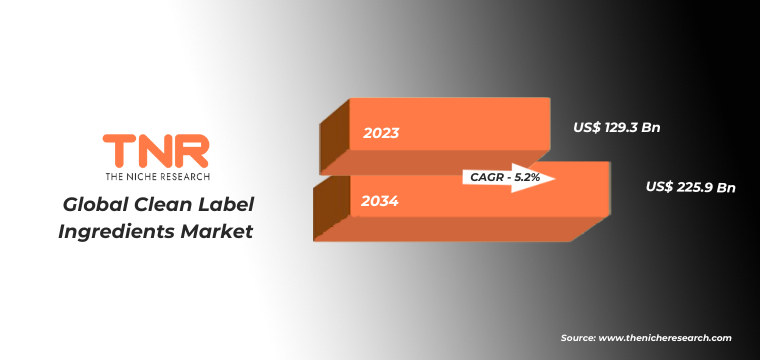
Benefits of Clean Labeling:
Clean labeling offers multiple benefits to both consumers and manufacturers. For consumers, it ensures transparency, allowing them to make informed choices based on clear, simple ingredient lists. This fosters trust and aligns with growing health consciousness. For manufacturers, clean labeling meets consumer demand for natural, minimally processed ingredients, enhancing brand reputation and loyalty. Additionally, it provides a competitive edge in a market increasingly focused on health and wellness. By embracing clean labeling, companies can appeal to a broader audience, supporting long-term growth and sustainability in the food industry.
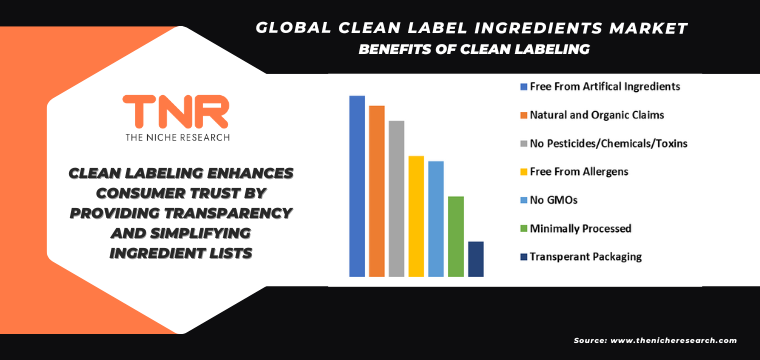
Clean Label Ingredients Market Dynamic:
Growth Drivers-
- Rising Consumer Health Consciousness: Growing awareness of the health impacts of artificial additives is driving demand for clean label ingredients. Consumers increasingly prefer natural, recognizable ingredients, fueling market growth as manufacturers reformulate products to meet this demand for healthier, more transparent options.
- Stringent Regulatory Standards: Governments worldwide are implementing stricter food labeling regulations, encouraging the use of clean label ingredients. These regulations push manufacturers to adopt natural alternatives, driving market growth as they strive to comply with evolving standards and meet consumer expectations for transparency.
- Increased Preference for Natural Products: A significant shift towards natural and organic foods is boosting the clean label ingredient market. As consumers seek minimally processed products with fewer artificial additives, manufacturers are responding by incorporating clean label ingredients, driving growth across various food and beverage categories.
Challenges-
- High Production Costs: Clean label ingredients often involve higher production costs due to the use of natural, minimally processed materials. These costs can be challenging for manufacturers, impacting profit margins and potentially leading to higher product prices, which might limit consumer accessibility and market expansion.
- Limited Ingredient Availability: The global availability of clean label ingredients can be inconsistent, leading to supply chain challenges. Sourcing high-quality, natural ingredients may be difficult, particularly in regions with limited agricultural resources, impacting manufacturers’ ability to consistently produce clean label products at scale.
- Consumer Misunderstanding: Despite growing demand, many consumers still lack a clear understanding of clean label terminology. Misinterpretation or skepticism can lead to confusion and reduced trust, posing a challenge for manufacturers trying to market these products effectively and educate consumers on the benefits of clean label ingredients.
Clean Label Ingredients Market Segmentation by Type, Form, Application, Region
Fruit and vegetable ingredients segment is set to dominate the clean label ingredients market, commanding a substantial revenue share of 21.9% over the forecast period. This dominance is driven by the increasing consumer preference for natural, whole-food-based ingredients in their diets. Fruits and vegetables are perceived as healthier and more authentic, aligning perfectly with the clean label movement’s emphasis on transparency and simplicity. These ingredients are extensively used in a wide range of food products, including snacks, beverages, and baked goods, further boosting their market share. As consumers continue to prioritize natural, minimally processed foods, the demand for fruit and vegetable ingredients is expected to grow steadily.
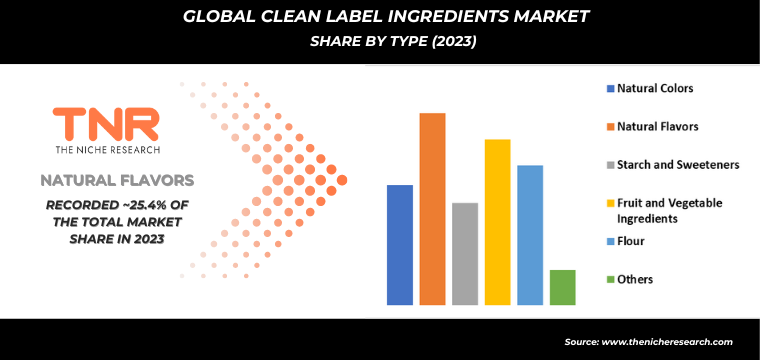
Liquid form dominated the global clean label ingredients market, acquiring a revenue share of 29.5% due to its versatility and ease of use. Unlike dry forms, liquid ingredients are more easily integrated into a wide range of food and beverage products, allowing for consistent texture and flavor distribution. Their ability to blend seamlessly without the need for rehydration or complex processing makes them highly preferred in the industry. Additionally, liquid ingredients are often more stable and can be more easily adjusted for concentration, offering manufacturers greater flexibility in formulation, further driving their dominance in the market.
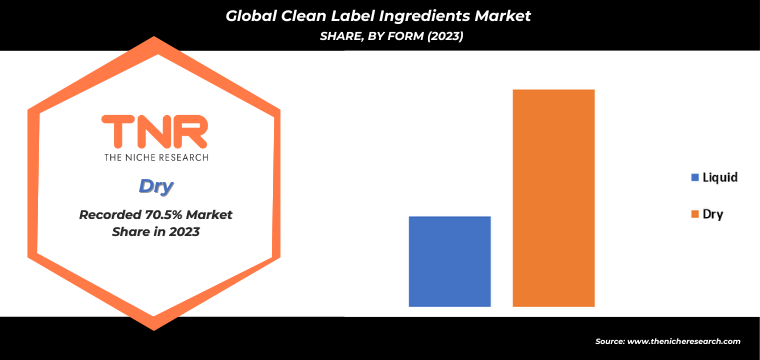
Dairy and frozen desserts segment is anticipated to be the fastest-growing application in the clean label ingredients market, capturing a substantial revenue share of 22.3% over the forecast period. This growth is fueled by increasing consumer demand for healthier, natural alternatives in indulgent products like ice cream, yogurt, and frozen treats. As consumers become more health-conscious, they seek clean label products free from artificial additives, preservatives, and colorings. Manufacturers are responding by reformulating their offerings with clean label ingredients, enhancing product appeal while maintaining taste and quality. This trend is driving rapid expansion in the dairy and frozen desserts sector within the clean label market.
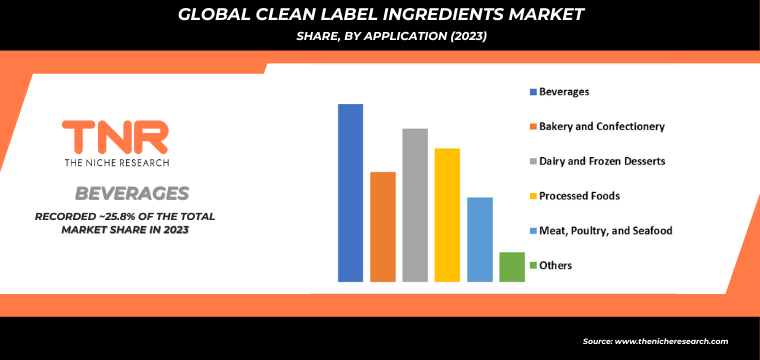
In 2023, North America is anticipated to play a significant role in propelling the growth of the clean label ingredients market, contributing approximately 29.5% to its overall expansion. This significant role is attributed to the region’s strong consumer demand for transparency and natural products, driven by heightened health consciousness and awareness of food additives. The robust presence of leading food and beverage manufacturers in North America, coupled with strict regulatory standards, further accelerates the adoption of clean label ingredients. As consumers increasingly prioritize clean, natural ingredients in their diets, the region’s influence on the market’s expansion is set to remain substantial.
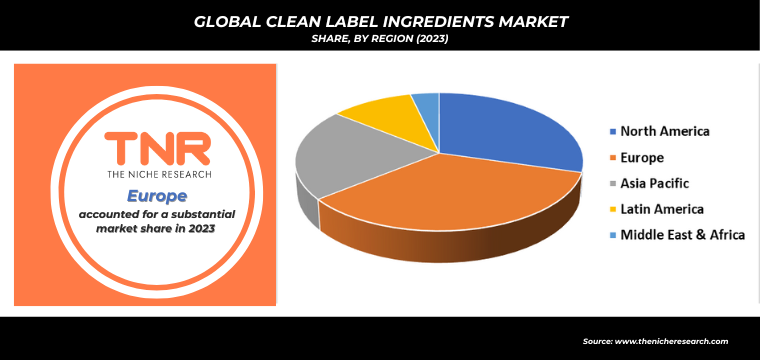
Major Players in Clean Label Ingredients Market
- Archer Daniels Midland
- Cargill
- Corbion Inc.
- Dupont De Nemours and Company
- Fluoryx
- Frutarom
- Ingredion Incorporated
- Kerry Group Plc
- Kerry Group PLC
- Koninklijke DSM N.V
- Sensient Technologies
- Tate & Lyle Plc
- TCI Chemicals
- Wilshire Technologies
- Other Industry Participants
Global Clean Label Ingredients Market Scope:
| Report Specifications | Details |
| Market Revenue in 2023 | US$ 129.3 Bn |
| Market Size Forecast by 2034 | US$ 225.9 Bn |
| Growth Rate (CAGR) | 5.2% |
| Historic Data | 2016 – 2022 |
| Base Year for Estimation | 2023 |
| Forecast Period | 2024 – 2034 |
| Report Inclusions | Market Size & Estimates, Market Dynamics, Competitive Scenario, Trends, Growth Factors, Market Determinants, Key Investment Segmentation, Product/Service/Solutions Benchmarking |
| Segments Covered | By Type, By Form, By Application, By Region |
| Regions Covered | North America, Europe, Asia Pacific, Middle East & Africa, Latin America |
| Countries Covered | U.S., Canada, Mexico, Rest of North America, France, The UK, Spain, Germany, Italy, Nordic Countries (Denmark, Finland, Iceland, Sweden, Norway), Benelux Union (Belgium, The Netherlands, Luxembourg), Rest of Europe, China, Japan, India, New Zealand, Australia, South Korea, Southeast Asia (Indonesia, Thailand, Malaysia, Singapore, Rest of Southeast Asia), Rest of Asia Pacific, Saudi Arabia, UAE, Egypt, Kuwait, South Africa, Rest of Middle East & Africa, Brazil, Argentina, Rest of Latin America |
| Key Players | Archer Daniels Midland, Cargill, Corbion Inc., Dupont De Nemours and Company, Fluoryx, Frutarom, Ingredion Incorporated, Kerry Group Plc, Kerry Group PLC, Koninklijke DSM N.V, Sensient Technologies, Tate & Lyle Plc, TCI Chemicals, Wilshire Technologies |
| Customization Scope | Customization allows for the inclusion/modification of content pertaining to geographical regions, countries, and specific market segments. |
| Pricing & Procurement Options | Explore purchase options tailored to your specific research requirements |
| Contact Details | Consult With Our Expert
Japan (Toll-Free): +81 663-386-8111 South Korea (Toll-Free): +82-808- 703-126 Saudi Arabia (Toll-Free): +966 800-850-1643 United Kingdom: +44 753-710-5080 United States: +1 302-232-5106 E-mail: askanexpert@thenicheresearch.com
|
Global Clean Label Ingredients Market
By Type
- Natural Colors
- Natural Flavors
- Starch and Sweeteners
- Fruit and Vegetable Ingredients
- Flour
- Others
By Form
- Liquid
- Dry
By Application
- Beverages
- Bakery and Confectionery
- Dairy and Frozen Desserts
- Processed Foods
- Meat, Poultry, and Seafood
- Others
By Region
- North America (U.S., Canada, Mexico, Rest of North America)
- Europe (France, The UK, Spain, Germany, Italy, Nordic Countries (Denmark, Finland, Iceland, Sweden, Norway), Benelux Union (Belgium, The Netherlands, Luxembourg), Rest of Europe)
- Asia Pacific (China, Japan, India, New Zealand, Australia, South Korea, Southeast Asia (Indonesia, Thailand, Malaysia, Singapore, Rest of Southeast Asia), Rest of Asia Pacific)
- Middle East & Africa (Saudi Arabia, UAE, Egypt, Kuwait, South Africa, Rest of Middle East & Africa)
- Latin America (Brazil, Argentina, Rest of Latin America)
Report Layout:
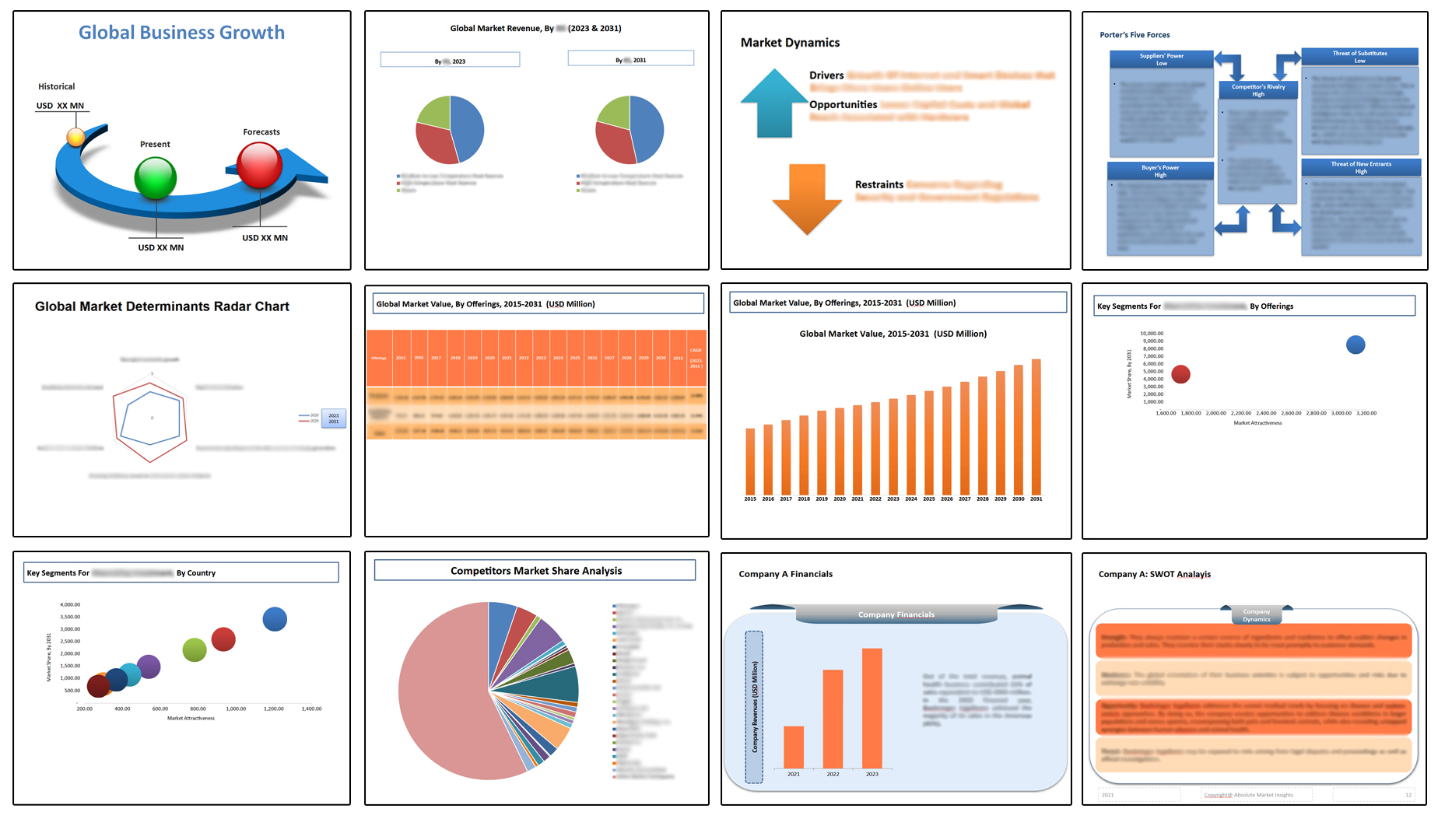
Table of Contents
Note: This ToC is tentative and can be changed according to the research study conducted during the course of report completion.
**Exclusive for Multi-User and Enterprise User.
Global Clean Label Ingredients Market
By Type
- Natural Colors
- Natural Flavors
- Starch and Sweeteners
- Fruit and Vegetable Ingredients
- Flour
- Others
By Form
- Liquid
- Dry
By Application
- Beverages
- Bakery and Confectionery
- Dairy and Frozen Desserts
- Processed Foods
- Meat, Poultry, and Seafood
- Others
By Region
- North America (U.S., Canada, Mexico, Rest of North America)
- Europe (France, The UK, Spain, Germany, Italy, Nordic Countries (Denmark, Finland, Iceland, Sweden, Norway), Benelux Union (Belgium, The Netherlands, Luxembourg), Rest of Europe)
- Asia Pacific (China, Japan, India, New Zealand, Australia, South Korea, Southeast Asia (Indonesia, Thailand, Malaysia, Singapore, Rest of Southeast Asia), Rest of Asia Pacific)
- Middle East & Africa (Saudi Arabia, UAE, Egypt, Kuwait, South Africa, Rest of Middle East & Africa)
- Latin America (Brazil, Argentina, Rest of Latin America)
The Niche Research approach encompasses both primary and secondary research methods to provide comprehensive insights. While primary research is the cornerstone of our studies, we also incorporate secondary research sources such as company annual reports, premium industry databases, press releases, industry journals, and white papers.
Within our primary research, we actively engage with various industry stakeholders, conducting paid interviews and surveys. Our meticulous analysis extends to every market participant in major countries, allowing us to thoroughly examine their portfolios, calculate market shares, and segment revenues.
Our data collection primarily focuses on individual countries within our research scope, enabling us to estimate regional market sizes. Typically, we employ a bottom-up approach, meticulously tracking trends in different countries. We analyze growth drivers, constraints, technological innovations, and opportunities for each country, ultimately arriving at regional figures.Our process begins by examining the growth prospects of each country. Building upon these insights, we project growth and trends for the entire region. Finally, we utilize our proprietary model to refine estimations and forecasts.
Our data validation standards are integral to ensuring the reliability and accuracy of our research findings. Here’s a breakdown of our data validation processes and the stakeholders we engage with during our primary research:
- Supply Side Analysis: We initiate a supply side analysis by directly contacting market participants, through telephonic interviews and questionnaires containing both open-ended and close-ended questions. We gather information on their portfolios, segment revenues, developments, and growth strategies.
- Demand Side Analysis: To gain insights into adoption trends and consumer preferences, we reach out to target customers and users (non-vendors). This information forms a vital part of the qualitative analysis section of our reports, covering market dynamics, adoption trends, consumer behavior, spending patterns, and other related aspects.
- Consultant Insights: We tap into the expertise of our partner consultants from around the world to obtain their unique viewpoints and perspectives. Their insights contribute to a well-rounded understanding of the markets under investigation.
- In-House Validation: To ensure data accuracy and reliability, we conduct cross-validation of data points and information through our in-house team of consultants and utilize advanced data modeling tools for thorough verification.
The forecasts we provide are based on a comprehensive assessment of various factors, including:
- Market Trends and Past Performance (Last Five Years): We accurately analyze market trends and performance data from preceding five years to identify historical patterns and understand the market’s evolution.
- Historical Performance and Growth of Market Participants: We assess the historical performance and growth trajectories of key market participants. This analysis provides insights into the competitive landscape and individual company strategies.
- Market Determinants Impact Analysis (Next Eight Years): We conduct a rigorous analysis of the factors that are projected to influence the market over the next eight years. This includes assessing both internal and external determinants that can shape market dynamics.
- Drivers and Challenges for the Forecast Period:Identify the factors expected to drive market growth during the forecast period, as well as the challenges that the industry may face. This analysis aids in deriving an accurate growth rate projection.
- New Acquisitions, Collaborations, or Partnerships: We keep a close watch on any new acquisitions, collaborations, or partnerships within the industry. These developments can have a significant impact on market dynamics and competitiveness.
- Macro and Micro Factors Analysis:A thorough examination of both macro-level factors (e.g., economic trends, regulatory changes) and micro-level factors (e.g., technological advancements, consumer preferences) that may influence the market during the forecast period.
- End-User Sentiment Analysis: To understand the market from the end-user perspective, we conduct sentiment analysis. This involves assessing the sentiment, preferences, and feedback of the end-users, which can provide valuable insights into market trends.
- Perspective of Primary Participants: Insights gathered directly from primary research participants play a crucial role in shaping our forecasts. Their perspectives and experiences provide valuable qualitative data.
- Year-on-Year Growth Trend: We utilize a year-on-year growth trend based on historical market growth and expected future trends. This helps in formulating our growth projections, aligning them with the market’s historical performance.
Research process adopted by TNR involves multiple stages, including data collection, validation, quality checks, and presentation. It’s crucial that the data and information we provide add value to your existing market understanding and expertise. We have also established partnerships with business consulting, research, and survey organizations across regions and globally to collaborate on regional analysis and data validation, ensuring the highest level of accuracy and reliability in our reports.
